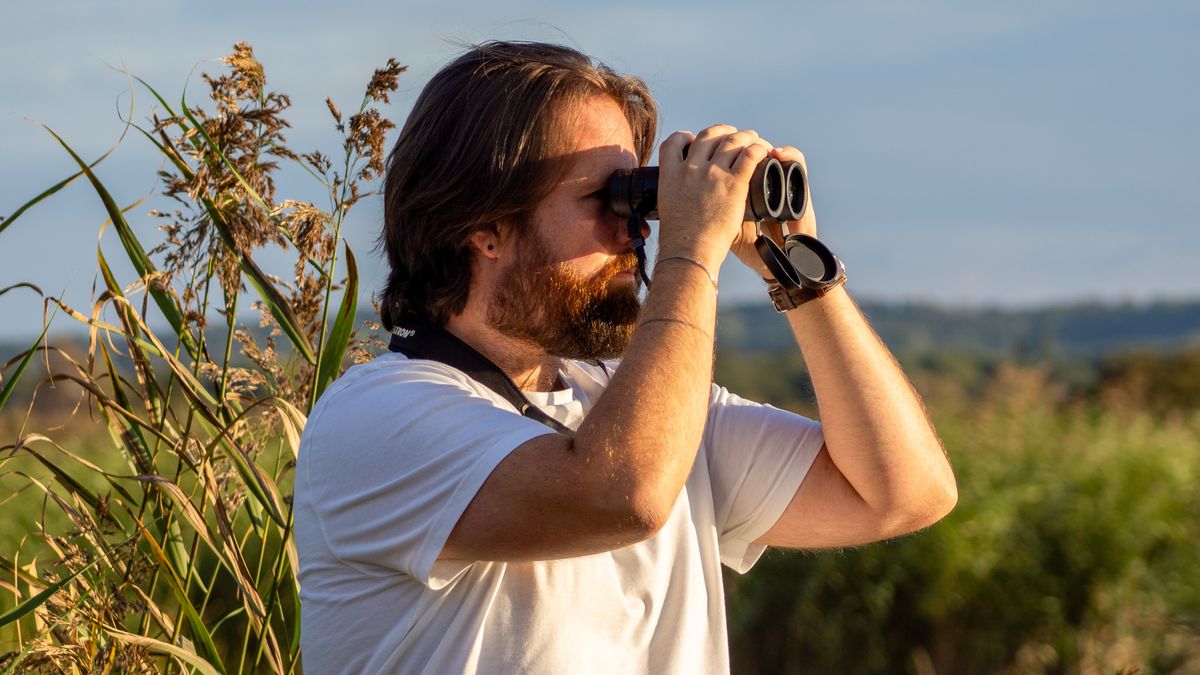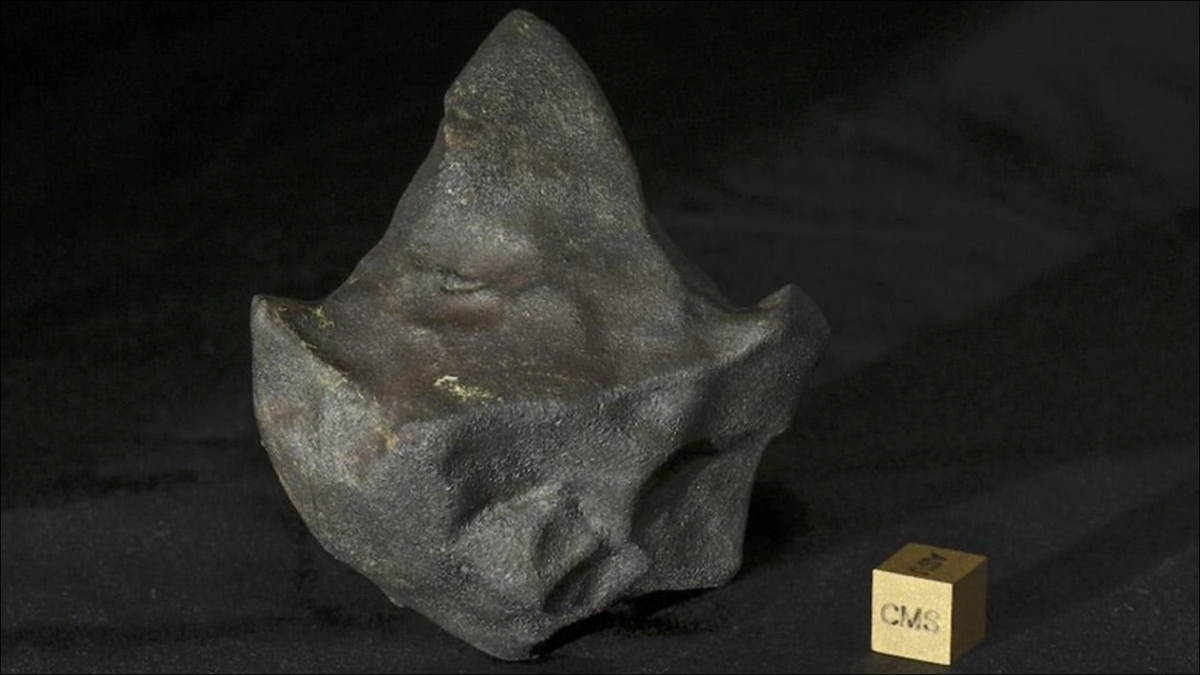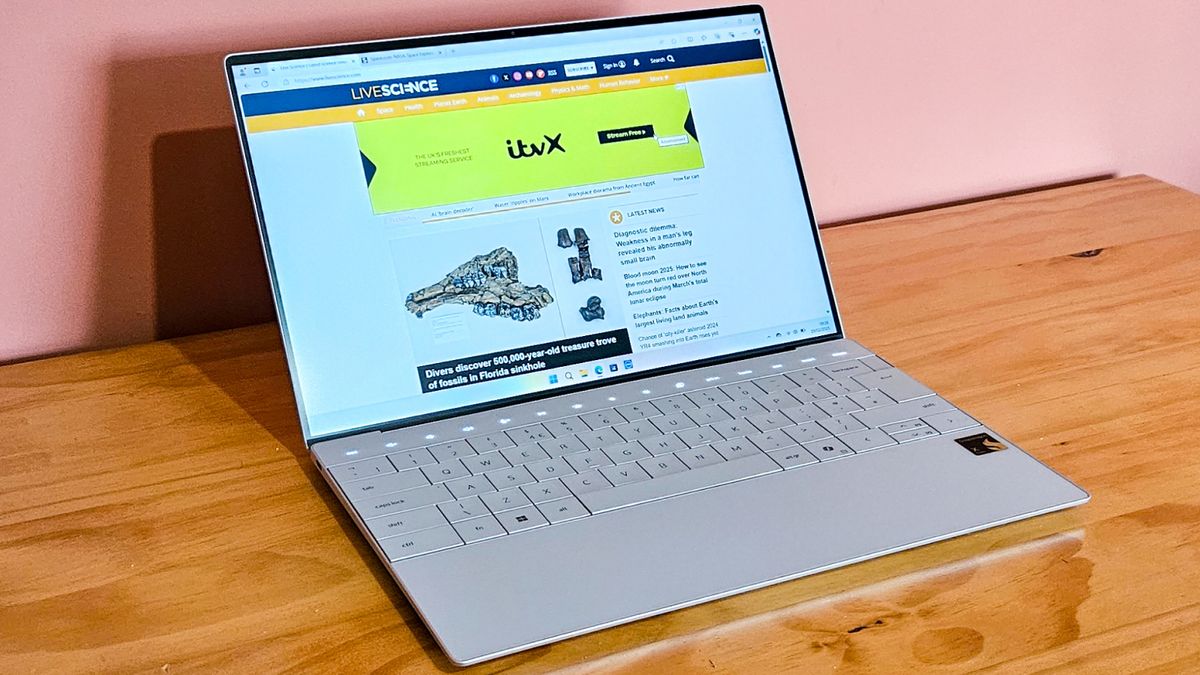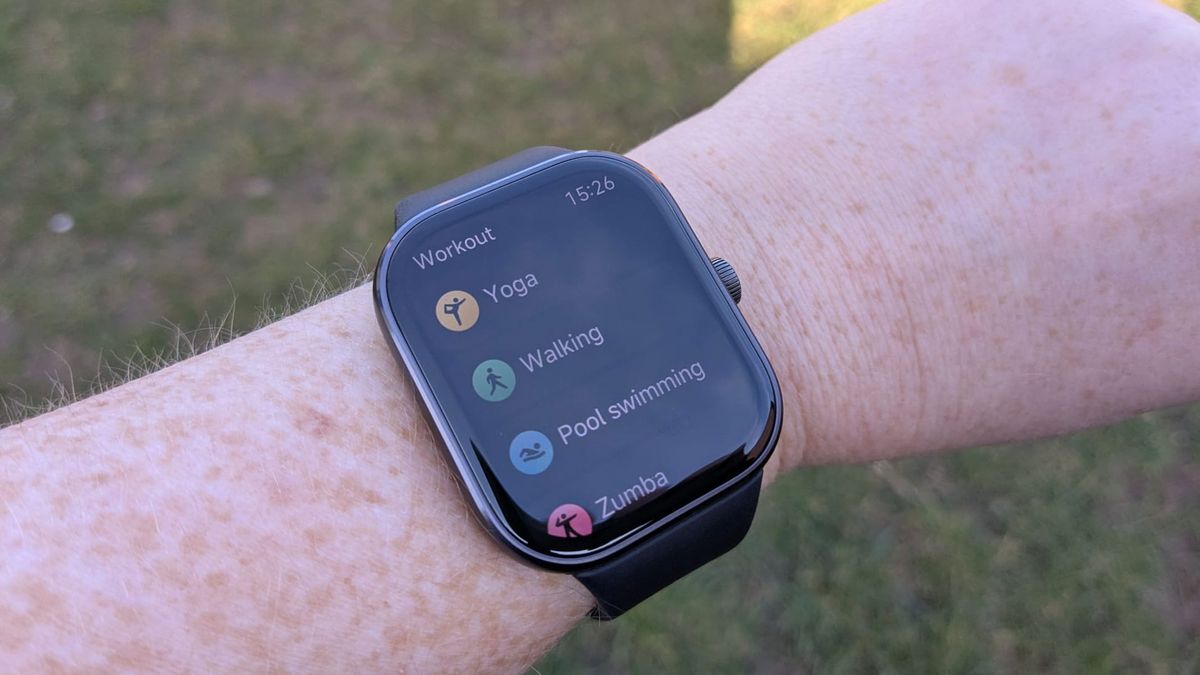Bird-watching is a rewarding pastime that brings you closer to nature, and having a set of the best binoculars for bird-watching can make all the difference to your experience. Whether you’re a beginner or a seasoned birder, investing in high-quality lenses can enhance your viewing experience.
With spring upon us, now is a great time to get closer to nature with a set of bird-watching binoculars. It’s an ideal time to spot lots of nesting birds, with spring being the ideal time for many birds to lay eggs so their young can be born in the warmer months.
The best binoculars are great for general use, but here we’re focusing on the best binoculars for bird-watching. In choosing our recommendations, we’ve considered things like lens quality, portability, comfort and zoom. You’ll find options suited for youngsters and beginners, with the best binoculars for kids typically being more lightweight and affordable, alongside more premium options for experienced nature observers.
The quick list
Best overall
They’re very expensive, but if you have the budget, the Leica Noctivid 10×42 binoculars have unrivaled optics and excellent build quality.
Read more below
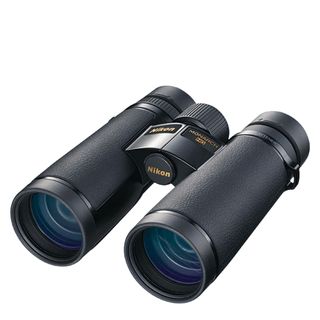
Best generalist
As you’d expect from a Nikon product, the Monarch HG 10×42 offers excellent image quality and a solid, sturdy build. These small and lightweight binoculars are fantastic all-rounders.
Read more below

Best in low light
Quality always shines in a Zeiss product, and the Victory SF 8×42 binoculars are no exception. They come with a hefty price tag, but if you can afford it, you get what you pay for.
Read more below

Best premium
With a super-stylish design and unironically crystal-clear sharp optics, the Swarovski EL 8.5×42 binoculars are worth every penny of their premium price point.
Read more below
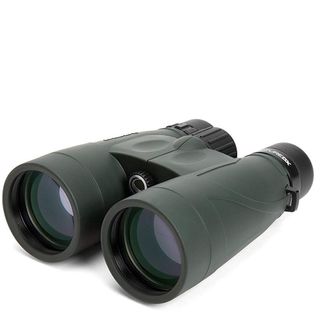
Celestron Nature DX 12×56
Best budget
Without breaking the bank, these binoculars offer a high magnification and some great low-light performance. They’re not the sharpest but are a great value buy.
Read more below
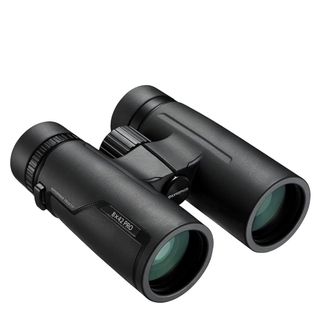
Best compact
These high-performance binoculars are the smallest and most lightweight on our list, making them ideal if you want something super-portable.
Read more below
Best binoculars for bird-watching 2025
Why you can trust Live Science
Our expert reviewers spend hours testing and comparing products and services so you can choose the best ones for you. Find out more about how we test.
Best overall bird-watching binoculars
Buy it if:
✅ You want unrivaled sharpness: The image quality you’ll get with these binoculars is second to none.
✅ You want impressive quality construction: With a slick diopter wheel and and a patented covering, the Leica Noctivid 10×42 binos feel every bit as premium as they are.
Don’t buy it if:
❌ You’re on a budget: These binoculars are exorbitantly expensive, and aren’t a good choice if you’re on a budget.
❌ You’re a beginner: You’ll benefit from a more affordable set of binoculars, such as the Celestron Nature DX 12×56.
The bottom line
🔎 Leica Noctivid 10×42: Arguably the absolute best binoculars on the market, the Noctivid 10×42’s image quality is beautifully sharp, crisp and free of chromatic aberration. They’re built to a high standard, but have a very premium price tag to match. ★★★★★
As you’d expect from a Leica product, build quality, resilience and durability sit at the heart of the Leica Noctivid 10×42 binoculars, but so does sublime lens and image quality. After more than a century of expertise in optical design, these new-generation Leica binoculars feel stylish and elegant — providing you’re prepared to pay a premium.
The view through these binoculars is crisp, bright and wide, and brightness is especially excellent, even in dull, overcast and misty conditions. The color delivery is flat and slightly cooler than we were expecting, but the field of view is well corrected, with special glass elements used to combat any appearance of color fringing and chromatic aberration at the edge of the frame. In fact, in our Leica Noctivid 10×42 review, we said these may be the only binoculars we’ve ever tested to have no signs of discernible chromatic aberration. The result is a super high-definition image with an outstanding level of detail.
There’s a premium feel to these binoculars that established bird-watchers will appreciate, especially when it comes to capturing targets in flight. The focus feels light and smooth, and the large eyepieces are easy to fit to different viewing styles. They’re coated with a patented material that makes them durable and hard-wearing, and of course they’re waterproof and nitrogen-filled to prevent fogging. Despite their small size, they feel weighty in the hand, but the grippy outer shell ensures they always feel safe and secure.
|
Attributes |
Notes |
|---|---|
|
Design |
Weighty and solid with patented coating |
|
Performance |
Unrivalled optics, waterproofing and anti-fogging |
|
Functionality |
Great diopter wheel, lacks tripod mounting point |
Best generalist bird-watching binoculars
Buy it if:
✅ You want something small and lightweight: These binoculars only weigh 1.5 lbs, making them easy to carry around.
✅ You want excellent optics: You’ll get fantastic views through these binoculars, with edge-to-edge sharpness.
Don’t buy it if:
❌ You’re on a budget: These are premium binoculars — with a premium price tag to match.
❌ You need image stabilization: You’ll need to rely on your own steady hand with these binoculars.
The bottom line
🔎 Nikon Monarch HG 10×42: “You get what you pay for” really does ring true with these binoculars: They’re expensive, but they’re premium in just about every way. Fantastic image quality, great build, and they come with plenty of useful accessories in the box. ★★★★½
The Nikon Monarch HG 10×42 binoculars offer a sleek design with a rubber-armored coating covering the strong magnesium alloy body, making them durable and easy to grip, especially in cold or rainy weather. Tthey’re also waterproof and fog-proof, ensuring clear vision in all conditions. It’s what you’d expect to get from a premium set of binoculars, and thankfully, the Monarch HG 10×42 doesn’t disappoint.
The Monarch HG 10×42 binoculars boast extra-low dispersion (ED) glass, which reduces chromatic aberration and enhances color accuracy. They feature a locking diopter ring, which reduces the risk of defocusing when not looking through them, and a very smooth focusing wheel makes finding your focus spot nice and easy to begin with.
There are some nice extra features, too, like a padded neck strap, suctioned eye cups and an included premium carry bag. Everything about these binoculars feels premium: They might be expensive, but you know you’re getting your money’s worth right out of the box.
Most importantly, the views you’ll get through these binoculars are beautiful. As we said in our Nikon Monarch HG 10×42 review, you’ll get edge-to-edge sharpness through each eye, and there’s barely any perceivable chromatic aberration to speak of.
The Monarch HGs feature a wide field of view (394 ft at 1000 yds), making it easy to track fast-moving birds. They’re comfortable to wear for long periods, helped by the fact they’re rather light and compact. At only 1.5 lbs, they’re also easy to carry around without weighing you down.
|
Attributes |
Notes |
|---|---|
|
Design |
Lightweight and strong magnesium alloy body |
|
Performance |
Edge-to-edge sharpness, no perceivable chromatic aberration |
|
Functionality |
Smooth focusing wheel, useful locking diopter ring |
Best low-light bird-watching binoculars
Buy it if:
✅ You want some of the best binoculars on the market: These have a premium price tag, but they’re a seriously premium product.
✅ You want great low-light vision: The Zeiss Victory SF 8×42 work very well in low light conditions.
Don’t buy it if:
❌ You’re on a budget: These come with a very prohibitive price tag, so if you’re on a budget, they aren’t for you.
❌ You want very small binos: These aren’t the biggest, but there are smaller sets available. Maybe take a look at the Nikon Monarch HG 10x42s.
The bottom line:
🔎 Zeiss Victory SF 8×42: Seriously expensive but seriously good quality, the Zeiss Victory SF 8×42 binoculars aren’t for everyone, but if you can afford them you won’t be disappointed by the outstanding optics. ★★★★½
The Zeiss Victory SF 8×42 binoculars are eye-wateringly expensive. But with a premium price tag comes a seriously premium product. You know you’re getting something good with a Zeiss product, and the Victory SF 8×42 binoculars don’t disappoint. If you can afford these, they’re among the best binoculars for bird-watching you can buy.
The Victory SF 8x42s offer an ergonomic design with a unique SmartFocus concept, allowing easy and precise adjustments. These binoculars also have something of a unique design, which allows for better prolonged use as they’re lighter and feel more agile to use than some other similarly-priced models — although we feel that their design might not be to everyone’s tastes. Introduced more than 10 years ago, earlier models did suffer from some build quality issues, but these have since been ironed out by Zeiss.
The Ultra-FL lens system provides unparalleled brightness and sharpness, which makes these models perfect for low-light conditions — ideal if you want to try and catch a glimpse of a nocturnal bird just after sunset. The focuser action is ultra-precise and accurate, and the lack of any sort of chromatic aberration is especially impressive, with only the slightest fringing visible at the outer edges of the frame.
The binoculars feature a wide field of view (444 ft at 1,000 yards), helping you spot birds quickly. In day-to-day use, the long lenses feel a little large and cumbersome, but you soon get used to them.
|
Attributes |
Notes |
|---|---|
|
Design |
Superior build quality, long lenses. |
|
Performance |
Great low-light performance, excellent sharpness |
|
Functionality |
SmartFocus makes adjustments easy |
Best premium bird-watching binoculars
Buy it if:
✅ You’re serious about bird-watching: The price tag here means the Swarovski EL 8.5×42 binoculars aren’t a good choice for casual bird-watchers.
✅ You care about style: These binoculars are seriously good-looking.
Don’t buy it if:
❌ You need a light pair of binoculars: At 29.5 oz, these are slightly heavier than most of the competition.
❌ You’re on a budget: These are prohibitively expensive if you’re on a budget. Take a look at the Celestron Nature DX 12×56 instead.
The bottom line:
🔎 Swarovski EL 8.5×42: Just like the crystalware that Swarovski is known for, the EL 8.5×42 binoculars are bright and crisp. The optics are seriously beautiful, and the binoculars themselves are nice to look at too — if a little heavier than their competitors. ★★★★½
All binoculars in the Swarovski EL series offer an open-bridge design, superior handling, comfort and premium glass, and of course, this EL 8.5×42 variation is no different. These premium binoculars are seriously high quality, made with magnesium housing that feels like it offers serious durability without adding too much excessive weight.
We think these binoculars are very stylish looking, too, thanks to their natural green coloring (great for staying camouflaged) and the Swarovski Optik hallmark emblazoned above one eye cup. It’s a nice little touch without being too over-the-top and flashy.
The Swarovski EL 8.5×42 binoculars deliver exceptional clarity thanks to their fluoride-containing HD lenses that minimize color fringing. As you’d expect from a manufacturer with a long history of exemplary glass cutting, there’s also a huge level of brightness and crispness that’s hard to match elsewhere. There’s excellent close focusing up to 1.5 m, too, along with edge-to-edge sharpness that makes looking through these binoculars a delight.
With 8.5x magnification, the Swarovski EL 8.5x42s possess a fair bit of power in terms of magnification for distance viewing, which may set them apart from other binoculars in the same price bracket — it’s a nice compromise without needing to go up to 10x magnification. But ultimately, it’s in the brightness and clarity of the image that these binoculars really begin to show a marked difference from the competition.
|
Attributes |
Notes |
|---|---|
|
Design |
Magnesium housing, eye-catching green color |
|
Performance |
Flouride-containing HD lenses deliver exceptional quality |
|
Functionality |
High magnification power |
Best budget bird-watching binoculars
Buy it if:
✅ You want good magnification: With 12x magnification, these Celestron Nature binos have the highest magnification on our list.
✅ You’re just getting started in bird-watching: These binoculars are inexpensive, so they’re a great pair to start out with.
Don’t buy it if:
❌ You want something lightweight: They can become heavy after long periods of handheld use. Take a look at the Nikon Monarch HG 8x42s instead.
❌ You want the sharpest views possible: They’re fine for the price, but you’ll need to spend more if you want pin-sharp views. We recommend the Leica Noctivid 10×42.
The bottom line:
🔎 Celestron Nature DX 12×56: The high magnification makes these a great pair of bird-watching binoculars, and their budget price is appealing. They’re not pin-sharp, but for the money, they’re great value. ★★★★½
The Celestron Nature DX 12×56 binoculars aren’t the smallest or lightest on this list, but given they have the highest magnification, that’s to be expected. That 12x magnification is great, and makes bird-watching a pleasure, especially for newcomers. Their largest objective lenses — 56mm — make them ideal for using in low light, too, so if you want to spot nocturnal birds after twilight, these are a great choice.
Despite being bulky, we like the design of the Celestron Nature DX 12×56 binoculars. Their natural green tone helps you blend into your surroundings, and the rubber grip means they always feel secure in your hand. They can get heavy after long periods of use, so tripod-mounting them is an option if you need to give your arms a rest — although you will need to purchase an adapter to be able to do so.
As we discussed in our Celestron Nature DX 12×56 review, you’ll get clear and detailed images through these binoculars thanks to their BaK-4 glass. We did, however, notice a bit of chromatic aberration in high-contrast images, but given the price point of the binoculars it’s not too concerning. While the binoculars aren’t quite as sharp as we’d have liked, images are bright and full.
The Celestron Nature DX 12×56 binoculars are waterproof, so you don’t have to worry about getting caught out in a bit of rain. The lenses are also multi-coated to protect against ghosting and flares.
|
Attributes |
Notes |
|---|---|
|
Design |
Attractive green finish with comfortable grips |
|
Performance |
Powerful magnification, great in low light |
|
Functionality |
Heavy, but can be tripod-mounted |
Best mid-range bird-watching binoculars
Buy it if:
✅ You don’t want to break the bank: Despite excellent performance and build quality, these binoculars aren’t going to cost you the earth.
✅ You wear glasses: With a huge 20.2 mm eye relief, these are a great option for anyone who wears glasses.
Don’t buy it if:
❌ You’re not an avid bird-watcher: Occasional binoculars users can likely save a few dollars by choosing something like the Celestron Nature DX 12×56.
❌ You’re like resistance when focusing: The focus wheel of the Celestron Regal ED 10×42 is a little loose, so focusing requires careful precision.
The bottom line:
🔎 Celestron Regal ED 10×42: Without breaking the bank, the Celestron Regal ED 10×42 binoculars offer fantastic performance. They look great, their optics are excellent, and it’s hard to pick fault with them. ★★★★★
A neck strap obviously isn’t the be-all and end-all of a good pair of binoculars, but the strap supplied with the Celestron Regal ED 10×42 binoculars is one of the most comfortable we’ve ever used. That sort of extra touch is what makes the Celestron Regal ED range feel like a premium product, even though the price tag of these binoculars puts them well under most of their competition.
In our Celestron Regal ED 10×42 binoculars review, we poured a lot of praise onto the optics. A whole host of optical technologies, including BaK-4 glass and field-flattening tech, ensure that these binoculars consistently offer some of the best views around. You’ll get a seriously impressive field of view with no distortion, and the image is sharp from edge to edge. And even when looking at high-contrast images — like dark tree branches against a bright sky — we noted minimal chromatic aberration.
A minimal nitpick is the fact that the focus wheel of the Celestron Regal ED 10×42 binoculars is a little loose. We’ve found it easy to knock accidentally, which means needing to find your focus point again. It’s a minor issue, and could be something specific to our review unit, but it’s worth bearing in mind.
Still, given the price point of these binoculars, it’s hard to mind too much. You’ll only get better optics and performance if you pay four figures or more: At this price point, you’ll struggle to find anything more impressive.
|
Attributes |
Notes |
|---|---|
|
Design |
Textured rubber body for comfortable holding |
|
Performance |
BaK-4 glass, expansive and undistorted views |
|
Functionality |
Focus wheel a little loose, very comfortable neck strap |
Best compact bird-watching binoculars
Buy it if:
✅ You’re going traveling: The lightweight and compact body of the Olympus 8×42 Pro makes them a great choice for traveling with.
✅ You want weatherproof binoculars: They are waterproof up to a depth of one meter, and the lenses themselves are water-repellant.
Don’t buy it if:
❌ You’re on a tight budget: These aren’t the most expensive binoculars on the market, but there are certainly cheaper options, like the Celestron Nature DX range.
❌ You need image stabilization: You won’t find it here, but it’s worth taking a look at the Canon 10×20 IS.
The bottom line:
🔎 Olympus 8×42 Pro: These mid-price binoculars absolutely impress when it comes to image quality, and their small size and lightweight body make them great for traveling with. ★★★★
Coming from a renowned brand, you know you’re buying a good product when it comes to the Olympus 8×42 Pro binoculars. With a mid-range price point, they aren’t going to quite rival the most expensive binoculars on our list in terms of performance and build quality, but they represent a great choice for anyone with a modest budget. This lightweight and compact set of binoculars is perfect for carrying around and traveling with.
In our Olympus 8×42 Pro review, we were particularly impressed with the build quality given their price. Despite being lightweight, the binoculars feel solid and well made, and they sport a rubberized outer texture which ensures they feel secure in your hands. They are nitrogen-filled to prevent fogging, and they’re also waterproof, meaning you don’t have to worry too much about them getting wet.
Since these are part of Olympus’s Pro range of binoculars, they come with non-coated high-performance Zuiko optics and ED lenses — the same as you’ll find in Olympus’s camera range. It results in fantastic light transmission, far better than you’d expect given their class. Images are also sharp and clear all the way to the edge of the frame.
As a nice bonus, you’ll also get an impressive 15-year warranty when you buy the Olympus 8×42 Pro binoculars, giving you peace of mind over any faults that might appear over their lifespan.
|
Attributes |
Notes |
|---|---|
|
Design |
Well built, compact but sturdy |
|
Performance |
Sharp and clear views from edge to edge |
|
Functionality |
Waterproof and fogproof |
Best bird-watching binoculars with image stabilization
Buy it if:
✅ You need image stabilization: IS can make a huge amount of difference when bird-watching.
✅ You want clear and sharp optics: These binoculars offer seriously impressive views.
Don’t buy it if:
❌ You need anti-fogging: Frustratingly, there’s no nitrogen purging in the Canon 10×32 IS, so you will get fogging.
❌ You’re on a budget: As great as these binos are, they come at a price. If you don’t want to spend as much, consider the Nikon Stabilized 10×25 binoculars.
The bottom line:
🔎 Canon 10×32 IS: These binoculars are expensive, but image stabilization is a game-changer for bird-watching, and the optics here are fantastic. It’s disappointing there is no nitrogen purging, though. ★★★★½
It’s hard to put into words how great using a pair of image-stabilized binoculars is until you’ve actually tried it. For bird-watching, it can be game-changing, allowing you to get closer to your subjects than ever, with a beautifully crisp, clear and, most importantly, stable image.
These binoculars absolutely shine when it comes to image quality, and in our Canon 10×32 IS review, we described them as being among the best binoculars we’ve ever used. The lenses come with a Super Spectra coating which goes a long way to reduce ghosting and flaring, and a choice of two different image stabilization (IS) modes allows you to stabilize either on a static object or a moving subject, like a bird in flight.
We’ve even used them at night to great success, which is surprising given their fairly small objective lens diameter. There is one major downside to the Canon 10×32 IS, however. Frustratingly, there is no nitrogen purging here, something we’d absolutely expect given the price point of these binoculars. It means your lenses are likely to fog up as you move between hot and cold locations — particularly frustrating when you’re first leaving the house early in a morning.
We’ve also encountered a fair bit of chromatic aberration while using these binoculars — although we do feel it’s perhaps more visible given just how bright and clear they are.
|
Attributes |
Notes |
|---|---|
|
Design |
Attractive camouflage green body, heavy but comfortable |
|
Performance |
Incredible optical quality, but no nitrogen purging |
|
Functionality |
Two IS modes, operated via a button on the side |
Best compact IS binoculars for bird-watching
Buy it if:
✅ You need image stabilization: IS can make a huge amount of difference when bird-watching.
✅ You want super compact binoculars: Weighing just 14.3 oz and measuring just 4.6 in long, these binos are the smallest in this guide.
Don’t buy it if:
❌ You don’t want to be messing with batteries: The downside of image stabilization is that it requires power, so you’ll need to keep spare batteries on hand.
❌ You wear glasses: These binoculars have a small eye relief, so you’d be better choosing something larger, like the Celestron Regal ED 10×42.
The bottom line:
🔎 Nikon Stabilized 10×25: Cheaper and smaller than the Canon 10×32 IS, the brand new Nikon Stabilized 10×25 binoculars are a great option if you don’t want to spend four figures on IS and need something to fit comfortably in your pocket. ★★★★
The Nikon Stabilized 10×25 binoculars are so new that we’re still waiting to test them. Early indications suggest that these are excellent compact binoculars, however, with game-changing Image Stabilization in an impossibly small body. So small, in fact, that these binoculars weigh just 14.3 oz — half of what some other binoculars on this list weigh.
Despite being so small and lightweight, though, the Stabilized 10×25 binoculars feel seriously sturdy and robust. They’re great quality, and come with everything you’d expect in the box, including a neck strap and protective eye cups.
Obviously, Image Stabilization is the real selling factor on the Nikon Stabilized 10×25 binoculars. With Canon’s IS range being the only real player in the IS field, it’s nice to finally have another competitor to take seriously.
The IS here works very well, with a button on top of the binoculars activating it instantly. The contrast between using it and not using it is like night and day, and it makes viewing birds, whether still or in motion, a much more pleasant experience. If you accidentally leave IS switched on, it’ll automatically shut off after 60 minutes so as to not eat up your battery.
One thing to keep in mind with the Nikon Stabilized 10×25 binoculars, though, is their very small eye relief. If you wear glasses this may be an issue, but it’s true of most compact binoculars. It’s often a trade-off between size and comfort, so you’ll need to decide what’s most important.
We’ll have a full review of the Nikon Stabilized 10×25 soon.
|
Attributes |
Notes |
|---|---|
|
Design |
Very compact, attractive design |
|
Performance |
Bright and sharp views. |
|
Functionality |
Easy-to-operate IS with a button on top |
Comparison
| Row 0 – Cell 0 |
Magnification |
Objective lens diameter |
Lens coating: |
Field of view at 1,000 meters: |
Minimum focusing distance: |
Eye relief |
Weather sealed: |
Weight |
|
Nikon Monarch HG 10×42 |
10x |
42 mm |
Fully multi-coated |
394 ft / 120.2 m |
6.6 ft / 2 m |
17mm |
Waterproof and nitrogen-purged |
1.5 lbs (680 g) |
|
Olympus 8×42 Pro |
8x |
42 mm |
Fully multi-coated |
43 ft / 13.1 m |
4.9 ft / 1.5 m |
16 mm |
Waterproof and nitrogen-purged |
1.5 lbs (680 g) |
|
Celestron Nature DX 12×56 |
12x |
56 mm |
Fully multi-coated |
315 ft / 96 m |
9.84 ft / 3 m |
16 mm |
Water-resistant and nitrogen-purged |
2.26 lbs (1.03 kg) |
|
Leica Noctivid 10×42 |
10x |
42 mm |
Anti-Reflection fully multi-coated |
443 ft / 135 m |
6.2 ft / 1.9 m |
19 mm |
Water resistant and fog-proof |
1.88 lbs (853 g) |
|
Zeiss Victory SF 8×42 |
8x |
42 mm |
Zeiss T* fully multi-coated |
485 ft / 148 m |
4.9 ft / 1.5 m |
18 mm |
LotuTec weather sealing |
1.71 lbs (780 g) |
|
Swarovski EL 8.5×42 |
8.5x |
42 mm |
Fully multi-coated with Swarotop & Swarodur patents |
436 ft / 133 m |
16 ft / 4.9 m |
20 mm |
Waterproof and fog-proof |
1.84 lbs (835 g) |
|
Celestron Regal ED 10×42 |
10x |
42 mm |
Fully multi-coated |
370 ft / 113 m |
4.9 ft / 1.5 m |
20.2 mm |
Dust-repellent and waterproof |
1.69 lbs (768 g) |
|
Canon 10×32 IS |
10x |
32 mm |
Fully multi-coated with ‘Super Spectra’ |
344 ft / 105 m |
6.5ft / 2 m |
14.5 mm |
Waterproof, no anti-fogging |
1.7 lbs (780 g) without batteries |
|
Nikon Stabilized 10×25 |
10x |
25 mm |
Fully multi-coated |
283 ft / 94 m |
9.8ft / 3 m |
14 mm |
Non-waterproof |
0.89 lbs (405 g) without batteries |
Frequently Asked Questions
What are the best bird-watching binoculars?
We think the best bird-watching binoculars are the Leica Noctivid 10×42. These binoculars are expensive, but they have unrivalled image quality, allowing you to see birds in incredible clarity. They’re the only binoculars we’ve ever tested to not have any sort of discernible chromatic aberration, which is extraordinary.
What strength of binoculars is best for bird-watching?
This will be a personal preference, but most bird-watchers will prefer a magnification between 8x and 10x. Lower magnification binoculars tend to be smaller, and so will be easier to carry and transport around, while high magnification binoculars will be bulky and harder to stabilize (unless they have IS built-in).
A higher magnification will allow you to get closer to the action, which some birders may prefer — we’ve recommended the Celestron Nature 12×56 binos in our guide for that reason, with their powerful 12x magnification. For most bird-watchers, though, 8x magnification is plenty strong enough.
Are 8×42 or 10×42 binoculars better for bird-watching?
Both are good choices, and it depends on personal preferences. 8×42 binoculars have a magnification of 8x, while 10×42 have a magnification of 10x. Typically speaking, the 8×42 binoculars will be smaller, and it’ll be easier to get a steadier image with them. But 10×42 binoculars will allow you to see objects further away, which some birders may prefer.
What do binoculars numbers mean?
Next to most binoculars’ names, you’ll see two numbers, like 8×32 or 10×42. The first number relates to the magnification strength of the binoculars, and the second number is the objective lens diameter. So a 8×32 set of binoculars has a magnification of 8x and a lens diameter of 32mm. The higher the magnification, the further you’ll be able to see, and the higher the lens diameter, typically speaking the more light the lenses will let in.
Do you need image stabilization for bird-watching?
Image stabilization isn’t a must, and in fact most of our suggestions for the best bird-watching binoculars don’t include it. It’s a very nice feature to have, though, particularly on higher-powered binoculars, and once you’ve tried it you might find it hard to be without it.
Can you use bird-watching binoculars for astronomy?
Most binoculars are great for general use, meaning that you can use them for bird-watching, astronomy and a host of other activities. In fact, several pairs of binoculars that we’ve recommend as being great for bird-watching also appear in our guide to the best stargazing binoculars, including the Nikon Monarch HG 10×42 and the Leica Noctivid 10×42.
Are thermal/night vision binoculars good for bird-watching?
If you like the idea of watching nocturnal birds after dark, thermal/night vision binoculars can be a valid option, as they allow you to see better than the human eye can without much light. These tend to be very expensive, however, and the image quality through them will be much less than a standard pair of binoculars.
What should beginners look for in bird-watching binoculars?
When buying your first pair of bird-watching binoculars, you first need to consider budget. Deciding how much you can afford will help you narrow down your options — you don’t want to spend too much if you’re unsure it’s a hobby you’re going to continue with. You should look for a well-made pair of binoculars, ideally with a rubberized coating to protect them. Checking for lens coatings is also a good idea, too: Fully multi-coated lenses will offer much better image clarity than those without.
You should also consider how and where you’re going to use them. If you plan on traveling with them, a compact pair will be more beneficial: Look for binoculars with 8x magnification or less, as these tend to be smaller. But if you’re mostly wanting to bird-watch from your own yard, a larger pair — which are often cheaper — would be an option. Larger binoculars also allow you to mount them on a tripod, which will give you much steadier views with more powerful binoculars.
Do I need waterproof binoculars for bird-watching?
You don’t need waterproof binoculars for bird-watching, but it’s a nice extra to have. It’s easy to get caught in a rainstorm, and having the peace of mind that your equipment is safe from inclement weather is a big bonus. But unless you plan to bird-watch near lakes and other bodies of water, full submersion waterproofing isn’t necessary.
How we tested the best binoculars for bird-watching
Our binoculars are reviewed either by in-house experts or by freelance writers with extensive experience in using and reviewing binoculars. Our reviewers will have used and reviewed dozens, if not hundreds, of sets of binoculars, giving them a very strong view on features that do and don’t make for a good pair of binoculars.
We thoroughly test each pair of binoculars we review, assessing numerous factors including their build quality, optics, features and price. We’ll spend several weeks with a pair of binoculars before we write up our review, using them in real-world situations. For binoculars intended for bird-watching, that’s the primary activity we will use them for in a range of different locations — whether that’s songbirds, birds of prey, birds in safari parks, small birds perched in a backyard, high up in forests and more. For more generalist binoculars, we may use them in other situations, too, such as general nature watching, stargazing or even events-watching.
During the review process, we will use binoculars as if we were using them naturally in our day-to-day work and lives, testing how well they function in normal use. We’ll carefully check for things like chromatic aberration and other image defects, and see how well they can handle bright and high-contrast situations. If binoculars are waterproof or water-resistant, we’ll also test them within their given limits.
Ultimately, we’ll consider the price of a pair of binoculars and assess whether it’s justified, and who the intended user might be. The price may not affect our final verdict, but like all factors of an item, it’s something we will take into consideration.





